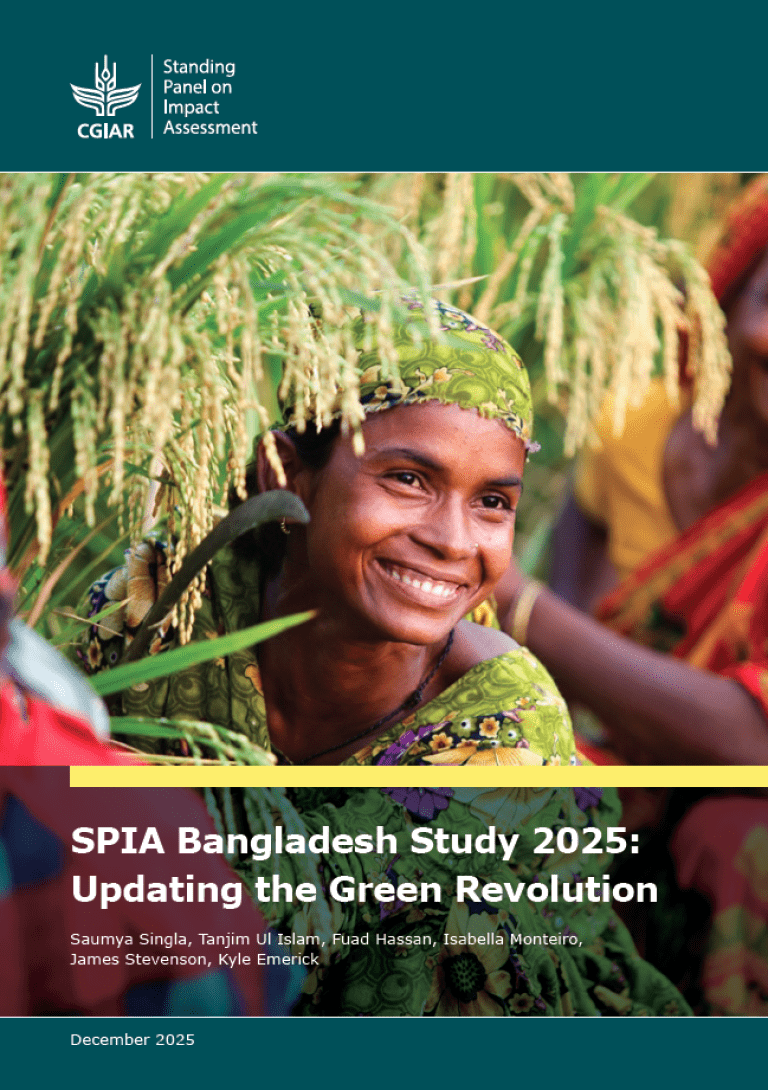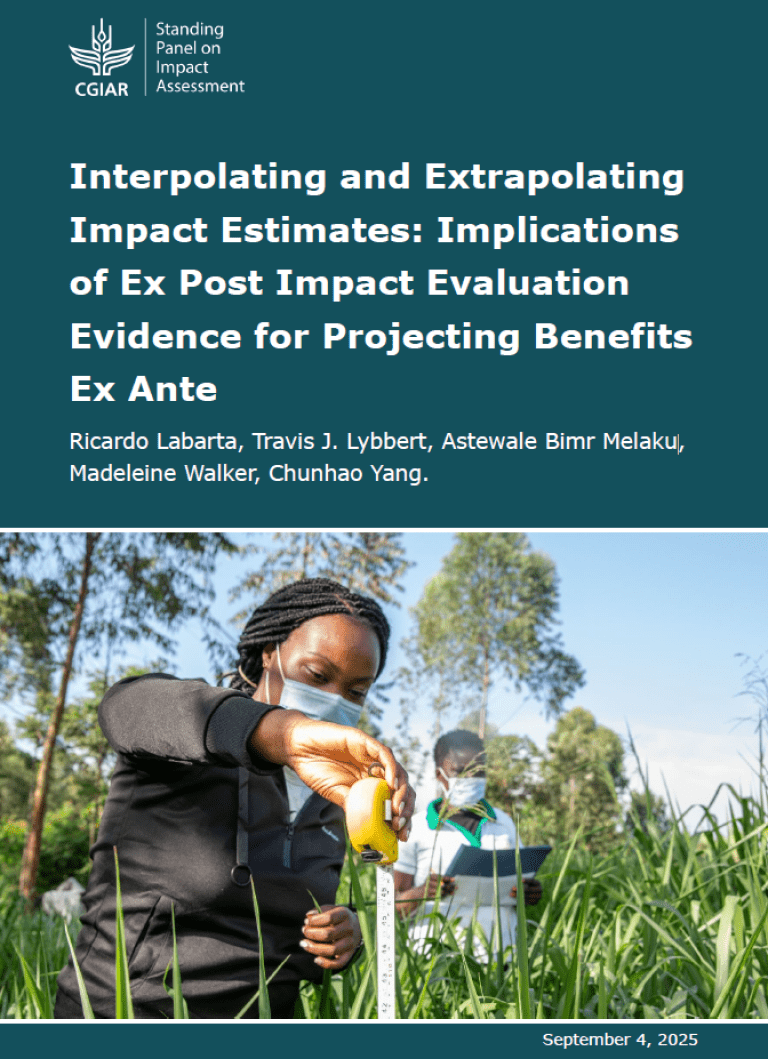In their feedback to the OneCGIAR Research Strategy, SPIA emphasized the need to have rigorous causal impact studies provide feedback loops in early stages of the research process in order to ensure greater impact of CGIAR innovations. A recently released paper by Manzoor Dar, Alain de Janvry, Kyle Emerick, Eleanor Wiseman and Elisabeth Sadoulet, provides a good example of such a study. The paper explores the effectiveness of private-sector partnerships in promoting the adoption of new agricultural technologies. The authors find that helping private input suppliers learn about new technology increases farm-level adoption by over 50% compared to the more commonly used public sector approach.
An important factor keeping farmers from adopting new agricultural technologies is lack of information. To break down such information barriers to adoption, a common approach is for public sector agricultural extension agents to provide information about the new technology to selected contact farmers, and then rely on these farmers to spread this knowledge further in their networks. Dar et al. conducted an experiment where they compared the standard public-sector approach to an intervention that instead directly targets local private seed dealers with information about a new flood-tolerant rice variety.
Among a sample of 72 blocks, spread across 10 districts in the Indian state of Odisha, 36 blocks were randomly selected as treatment blocks, where information about the new variety was targeted to private input dealers. The remaining 36 blocks were assigned as control blocks and in these, the standard public-sector approach was used to break information barriers to the adoption of the new seed variety. The same quantity of seeds and the same information were provided to input dealers in treatment blocks and to agricultural extension agents/contact farmers in control blocks. To make sure that the private partnerships approach was compared to the best version of the public-sector approach, the study supported the conventional government extension service in the control blocks. Apart from providing seed minikits to contact farmers, in control blocks, public-sector officials additionally organized large-scale demonstrations and farmer field days. These activities were not carried out in the private supplier treatment blocks.
Despite these additional activities in the control blocks, the authors find that the approach using seed dealers increased adoption among farmers by over 56 percent (from 6.3 to 9.8 percent). The adoption survey, conducted a year after the intervention, also showed that the average farmer in the treatment blocks was cultivating 69 percent more land with the new flood-tolerant seed variety.
The authors then explore whether the intervention targeted adoption to farmers that could gain the most from using the new technology. They address this by looking at whether adoption was greater among farmers with past flood exposure (who would stand more to gain from planting a flood-tolerant variety), and find that the private input supplier approach was indeed successful at increasing adoption among farmers that would experience the highest returns from planting the new variety. This confirms that using private dealers didn’t come at the cost of the wellbeing of farmers the most in need.
Finally, the study also sheds light on the mechanisms at play in explaining the success of private input suppliers in promoting the new variety. Two additional activities were carried out. Two years after the seeds were introduced, “secret shoppers” were sent out to 300 input dealers and the authors found that dealers in treatment blocks were 25% more likely to recommend the new variety to customers. This does not rule out other mechanisms, but it suggests that at least some of the effect is being driven by information exchange between dealers and farmers. Three years after the introduction of the seeds, another experiment was conducted; this time to uncover dealers’ motivations in diffusing the new seeds. The authors find evidence that business incentives and reputational concerns motivate seed dealers to promote the new variety, and particularly to farmers who can expect the greatest benefit from it.
The OneCGIAR research strategy emphasizes the importance of building partnerships with small, medium, and large enterprises in the private sector. This study shows the potential for this type of partnership in the scaling of CGIAR innovations. However, it is important to note that there most likely is no “one size fits all”-strategy to achieve this purpose. The most effective scaling strategy likely differs between contexts and types of innovations. This means that there is a lot of room for rigorous causal evidence, such as that provided in the Dar et al. study, to contribute to improving scaling efforts of CGIAR innovations.
There are also other ways in which rigorous causal impact evidence can be used to provide feedback loops into theories of change. In an earlier stage of the research process, when innovations are first tested with users, rigorous impact assessment studies can help inform on the extent to which predicted impacts emerge in a real-world setting. Causal evidence on constraints to adoption is then needed in order to target both new research efforts and public policy. In later stages, when evidence of adoption at scale has already been established, impact assessment studies are needed to help test whether adoption delivers impacts across different impact areas at scale. SPIA’s feedback to the One CGIAR research strategy underlines the importance of conducting impact assessment studies as an integrated part of the research process. Instead of only using backward-looking impact evidence at the end of the process, greater impact can be achieved if impact evidence is used to provide feedback throughout.



